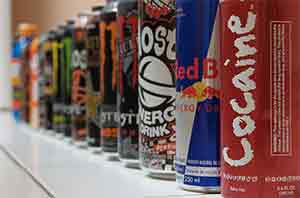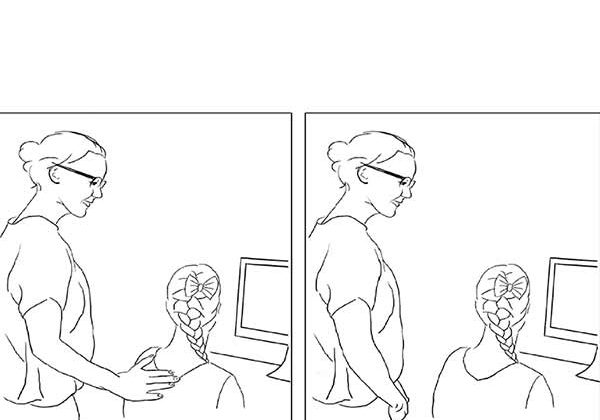Testosterone deficiency in the adult males
Abstract
Testosterone deficiency leads to multiple problems but can be difficult to diagnose. However, replacement therapy can be rewarding and a life changer for the patient.
Throughout the ages, the search for eternal youth has led down many paths. The discovery of testosterone was, many believed the elixir which had, at long last, been found. The medical use of testosterone, however, proved to be very challenging indeed and not quite the epitome of eternal youth as had been hoped for.1
Physiological functions of testosterone include protein synthesis with anabolic effects on muscle, erythropoiesis and bone.2 It also favourably alters glucose and lipid metabolism.3 Testosterone promotes energy, drive, motivation, concentration and endurance. It is also important in promoting psychosexual health and activity. All these are very important in promoting the well-being of the male individual.
Men are usually considered not to be subject to andropause4,5 but testosterone levels do decline with age (about 1.2% per annum from the age of 40, with about 12% of men above the age of 50 reaching 50% by 80 years of age). The level at which testosterone deficiency in adults occurs is a hotly debated issue. There are several reasons for this:
- different testosterone assays can give very variable testosterone levels;
- investigators use different assays in their studies whilst also taking different cut-off points;
- decreased libido and erectile dysfunction can occur at testosterone levels which vary from one individual to another.
Matters are further complicated as testosterone levels, besides changing with age, are known to decrease with increasing body mass index; as well as increase for several hours after intercourse and also show diurnal variation.
Given all the above problems, it is surprising that testosterone replacement therapy is ever initiated.6 Judicial use of testosterone replacement therapy will, however, improve the person’s well being, decrease the person’s cardiovascular risk parameters (although no large study has so far shown a decreased cardiovascular morbidity or mortality with therapy),7 improve muscle bulk, increase libido, correct erectile dysfunction (if there are no other causes e.g. long standing diabetes with neuropathy) and halt the decline of, or even improve, bone mineral density.
Conditions which are increasingly being identified as associated with low testosterone levels include diabetes8-11 and the metabolic syndrome,8 increasing age,5 heart failure,12 and obesity.13,14
Given the variability of the assays and other variations as already mentioned above, the indiscriminate clinical testing for testosterone deficiency is inappropriate.15 Targeting the correct, high risk individuals is the logical approach. Patients complaining of decreased libido and impotence should have a thorough history taking and examination looking for iatrogenic (e.g. beta-blocker therapy) or psychological causes prior to embarking on testosterone assay. High risk conditions include:
- diabetes with another complaint e.g. impotence, decreased libido, decreased bone density, lethargy not explained by other causes;
- obese individuals with erectile dysfunction;
- ‘non-intermittent’ impotence or lack of morning tumescence;
- osteoporosis. In a male this should always lead to an evaluation of testosterone levels as part of the investigations.
Most recent studies consider a total testosterone level of around 8 nmol/l as being the cut-off point for testosterone deficiency16,17 if certain criteria are met i.e. the sample is taken at around 10am and the individual has refrained from sexual activity for the past 24 hours.
Once the diagnosis is made, then appropriate therapy has to be initiated. Testosterone replacement may not always be the appropriate therapy. For example, consider the case of a widowed 74 year old male with osteoporosis and prostate problems. The appropriate therapy here is treatment directed at the osteoporosis – testosterone therapy may exacerbate the prostate problem, and if he has no desire for sexual activity, may be totally inappropriate.
For patients for whom testosterone therapy has been considered appropriate, then there are several options available, not all of which are available locally. Testosterone by oral route, although once popular has now lost favour because of problems with hepatic first pass metabolism and erratic serum levels. Testosterone gels and patches utilise the cutaneous route of administration and are fairly popular, but require at least a daily application. The main problem is transfer of testosterone to a female partner (possibly also to minors in the family) if the proper precautions are not taken. Parenteral testosterone esters are perhaps the most popular, although not always legitimately used e,g, in body building and other performance sports. Most companies are now discontinuing most of these esters, causing supply and therapy problems. This has mainly arisen as a consequence to the ‘hacking’ of the Chinese undecanoate ester to the European market. This product only requires an injection at approximately three monthly intervals. Its rise in popularity has resulted in companies discontinuing production of other esters. Various other modes of administration are at present under review, such as implants. Side effects are relatively few and mild if used appropriately. The most common is polycythaema, which often requires a decrease in dose and sometimes necessitates discontinuation of therapy. Liver dysfunction is probably the second most common side-effect. Uncontrollable rage and aggression has been reported, but is usually related to supra-pharmacological doses in abuse. Prostate problems, although often cited, are probably not an issue. No study has really shown an increase in prostate problems, including prostate cancer. In addition some studies have shown that the testosterone receptors on the prostate are easily saturated, so testosterone therapy does not really increase prostatic stimulation.18
Testosterone replacement can be a rewarding therapy, however, the pitfalls in diagnosis are such that specialist advice should be sought prior to initiation of any such therapy.
References
- Shalender Bhasin GRC, Frances J. Hayes. Testosterone Therapy in Adult Men with Androgen Deficiency Syndromes: An Endocrine Society Clinical Practice Guideline. 2010.
- Tuck SP, Francis RM. Testosterone, bone and osteoporosis. Frontiers of Hormone Research. 2009;37:123-32. PubMed PMID: 19011293.
- Volpato S, Vigna GB, Fellin R. The benefit and risk of testosterone replacement therapy in older men: effects on lipid metabolism. Acta Bio-Medica de l Ateneo Parmense. 2010;81 Suppl 1:95-9. PubMed PMID: 20518198.
- Wu CY, Yu TJ, Chen MJ. Age related testosterone level changes and male andropause syndrome. Chang Gung Med J. 2000 Jun;23(6):348-53. PubMed PMID: 10958037.
- Leifke E, Gorenoi V, Wichers C, Von Zur Muhlen A, Von Buren E, Brabant G. Age-related changes of serum sex hormones, insulin-like growth factor-1 and sex-hormone binding globulin levels in men: Cross-sectional data from a healthy male cohort. Clinical Endocrinology. 2000;53(6):689-95. PubMed PMID: 2001037037. 6. Behre HM, Christin-Maitre S, Morales AM, Tostain J. Transversal European survey on testosterone deficiency diagnosis. Aging Male. 2012;15(2):69-77. PubMed PMID: 22380815. 7. Nigro N, Christ-Crain M. Testosterone treatment in the aging male: myth or reality? Swiss Medical Weekly. 2012;142:w13539. PubMed PMID: 22430839. 8. Stellato RK, Feldman HA, Hamdy O, Horton ES, McKinlay JB. Testosterone, sex hormone-binding globulin, and the development of type 2 diabetes in middle-aged men: Prospective results from the Massachusetts Male Aging Study. Diabetes Care. 2000;23(4):490-4. PubMed PMID: 2000124275.
- Schipf S, Haring R, Friedrich N, Nauck M, Lau K, Alte D, et al. Low total testosterone is associated with increased risk of incident type 2 diabetes mellitus in men: results from the Study of Health in Pomerania (SHIP). Aging Male. 2011;14(3):168-75. PubMed PMID: 21039324.
- Ogbera OA, Sonny C, Olufemi F, Wale A. Hypogonadism and subnormal total testosterone levels in men with type 2 diabetes mellitus. Jcpsp, Journal of the College of Physicians & Surgeons – Pakistan. 2011;21(9):517-21. PubMed PMID: 21914405.
- Li H, Kong XB, Zhang HL, Wu J. Testosterone Levels in Males with Type 2 Diabetes and Their Relationship with Cardiovascular Risk Factors and Cardiovascular Diseases. Journal of Sexual Medicine. 2011 April;8(4):1260. PubMed PMID: 2011184024.
- Florvaag A, Oberle V, Fritzenwanger M, Kretschmar D, Betge S, Goebel B, et al. Testosterone deficiency in male heart failure patients and its effect on endothelial progenitor cells. Aging Male. 2012 September;15(3):180-6. PubMed PMID: 2012471670.
- Biswas M, Hampton D, Newcombe RG, Rees DA. Total and free testosterone concentrations are strongly influenced by age and central obesity in men with type 1 and type 2 diabetes but correlate weakly with symptoms of androgen deficiency and diabetes-related quality of life. Clinical Endocrinology. 2012 May;76(5):665-73. PubMed PMID: 2012209658.
- Mogri M, Dhindsa S, Ghanim H, Dandona P, Quattrin T. Testosterone concentration in obese young males. Diabetes. 2011 July;60:A345. PubMed PMID: 70629016.
- Bain J. Testosterone and the aging male: to treat or not to treat? Maturitas. 2010;66(1):16-22. PubMed PMID: 20153946.
- Anawalt BD, Hotaling JM, Walsh TJ, Matsumoto AM. Performance of total testosterone measurement to predict free testosterone for the biochemical evaluation of male hypogonadism. Journal of Urology. 2012 April;187(4):1369-73. PubMed PMID: 2012165588.
- Crewther BT, Lowe TE, Ingram J, Weatherby RP. Validating the salivary testosterone and Cortisol concentration measures in response to short high-intensity exercise. Journal of Sports Medicine and Physical Fitness. 2010 March;50(1):85-92. PubMed PMID: 20308978.
- Feneley MR, Carruthers M. Is Testosterone Treatment Good for the Prostate? Study of Safety during Long-Term Treatment. Journal of Sexual Medicine. 2012 August;9(8):2138-49. PubMed PMID: 2012455538.




